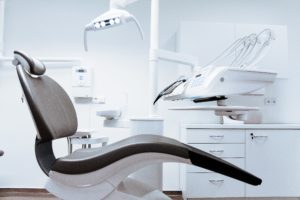If you are among the 15% of Americans who report having dental anxiety, then you might have heard about Waterlase and Solea dental lasers. If you have not, then you will be happy to learn that with technology advancing more dentists are utilizing Waterlase and Solea all-tissue dental lasers to treat patients. These dental lasers allow dentists to fill cavities without the need for Novocain (which means no anxiety causing needles) and no pain.

This is especially good news for people who are afraid of needles, drills or dental procedures in general. Laser technology is a revolutionary change in dentistry. Dentists are able to perform more procedures in one visit and patients no longer have to leave the dentist feeling numb and unable to eat or apply lipstick. It makes dental treatments more comfortable and it saves time. Waterlase is a tool developed by Biolase and the Solea was introduced by the Massachusetts-based Convergent Dental. While both lasers provide a painless way for patients to administer dental care, there are many differences beyond the companies that manufacture and sell them.
How do Waterlase and Solea Work?
Waterlase uses water, air and laser energy to get the job done. This erbium laser shoots at a wavelength of 2.7 microns that vaporizes the water in the tooth upon contact. Instantly, the water molecules start to expand and cut away at the surrounding enamel. This is ultimately the process the dentist uses instead of a drill for cavity removal. Waterlase is described as painless and requires little to no anesthesia in the vast majority of procedures – which means no need for shots.
The Solea directly vaporizes the tooth’s enamel It is ultimately a carbon dioxide laser that vaporizes a mineral called hydroxyapatite which makes up for 90% of tooth enamel. Mike Cataldo, CEO of Convergent Dental explains, “The Solea works like a chainsaw cutting down trees and other dental lasers (like Waterlase) work more like an axe.” Moving at a 9.3 microns, Solea is very fast, quiet and virtually painless. Dentists that use Solea report that 95% of Solea procedures are done without anesthesia and over 98% of those patients report no pain.
What Can Waterlase and Solea Do?
Since both Waterlase and Solea are all-tissue lasers, they can both be used to perform similar procedures including decay removal, gum surgery, root canals, smile design, abscess removal and much more. The major difference is comfort for the patient. Solea has a fast moving laser making it less invasive than Waterlase.
At Artistic Dental, Dr. Dougherty and Dr. Adhikari do whatever they can to make sure patients are comfortable. That is why Dr. Dougherty was one of the first dentist in the country to purchase a Solea laser and attend training. If you suffer from dental anxiety and avoid dental visits out of fear, consider contacting Artistic Dental for a complimentary consultation. If you would like to make an appointment to speak with our staff or learn more about our dental team and the services, we provide visit artisticd.com or call (602)-840-5400.
